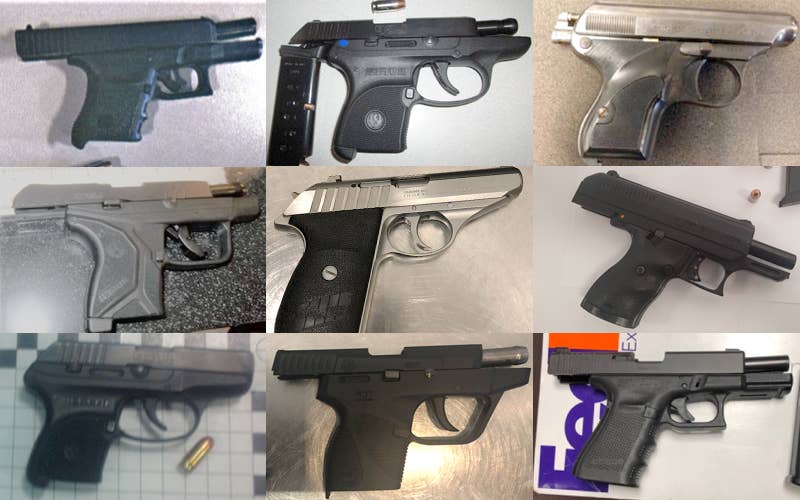
Airline transport pilot certificates allow pilots to fly all aircrafts with exception to an aircraft with special ratings. [Credit: CanvaPro]
The airline transport pilot certificate is the ultimate level of certificate for pilots in the United States. A mark of completion in terms of flight hours, academic requirements, and practical examinations, the ATP is a prerequisite for many of the most sought after jobs in professional aviation.
Though the paths toward an ATP certificate are varied, the end result is an achievement a pilot can be proud of. Let's review how you can get your ATP certification step by step.
Easily become an airplane or commercial pilot online! Courses designed by industry experts can help you pass FAA tests and get into the sky!
Enroll NowWhat Is an Airline Transport Pilot Certificate?
The ATP is the penultimate certificate (or license, in some countries) around the world.
In the United States, there is also a Restricted ATP (sometimes abbreviated R-ATP) that allows certain pilots who don’t meet the standard requirements to hold an ATP to receive a limited version valid only in certain operations in the United States.
What Can You Do With an Airline Transport Pilot Certificate?
An ATP is required to be a pilot at a Part 121 airline, to act as pilot in command (PIC) in some Part 135 operations, or to act as PIC of an aircraft with more than 30 passenger seats.
Insurance requirements may drive many additional professional pilots to hold an ATP. The holder of an ATP receives all the benefits of the commercial certificate and is implied to hold an instrument rating.
What Kind of Aircraft Can You Fly With an Airline Transport Pilot Certificate?
The holder of an ATP can fly all aircraft in the category and class with the exception of those requiring an aircraft-specific type rating, special federal air regulation (SFAR) training, or those requiring optional endorsements such as tailwheel-equipped aircraft.
Type ratings themselves must be flown to ATP standards, so it is not uncommon for pilots to apply for their ATP certificate practical exam in combination with a type rating.
Benefits of an Airline Transport Pilot Certificate
Having an ATP certificate makes a pilot very marketable as it shows he or she has committed significant time and energy into flight training as well as having met the standards required of the practical exam.
In 2014 the FAA mandated the addition of the Certification Training Program (commonly known as the ATP-CTP) for applicants of an airplane multiengine land class ATP. The additional course can add substantial cost for pilots completing ATP training on their own rather than through an employer.
Airline Transport Pilot Certificate Requirements
Unless a former military or collegiate pilot falling under one of the exemptions for a Restricted ATP, applicants for an unrestricted ATP certificate must meet the following:
- Be at least 23 years of age
- Be of good moral character
- Hold a commercial pilot certificate and instrument rating in category and class
- Meet the flight time requirements specified in FAR 61.159
- Pass the appropriate written test and practical exam.
5 Steps to Get an Airline Transport Pilot Certificate
For a pilot looking to complete the ATP on their own, the steps to completing the ATP are pretty straightforward. By this point in your professional pilot journey, you’re familiar with knowledge tests, practical exams, and what to expect on check ride day.
Step 1: Meet the Minimum Required Hours
For pilots applying for an unrestricted ATP, you will need a minimum of 1,500 hours total time, 500 hours cross-country flight time, 250 hours of flight time as pilot in command (PIC), 100 hours of night time, 75 hours of actual or simulated instrument time, and 50 hours of time in the aircraft class you are applying for the ATP in.
For pilots applying for a Restricted ATP (R-ATP), FAR 61.160 details the specific requirements depending on the type of applicant (former military, collegiate aviation graduate, etc). It’s worth noting the R-ATP is only valid for the airplane multiengine land class and does not meet the requirements of the International Civil Aviation Organization (ICAO).
Step 2: Complete the CTP Course, if Needed
A Certification Training Program (CTP) is only required for applicants for an ATP or R-ATP in the airplane multiengine land class. The standalone CTP course generally lasts about a week and includes lecture topics such as aerodynamics, meteorology, air carrier operations, and crew resource management (CRM).
This is combined with 10 hours of aircraft training in a flight training device (FTD) and full motion simulator modeling an aircraft of at least 40,000 pounds maximum takeoff weight. The list of approved CTP providers are available in a PDF produced by the FAA.
Step 3: Complete the FAA Written Exam
The FAA written exam for ATP certificates ranges from 90 to 125 questions depending on the category and class you’re applying for.
Like other knowledge exams, it is an overall test of your knowledge, requires a 70 percent grade to pass, and will generate a report at the completion of the exam detailing items missed for review on your practical test.
Step 4: Complete the Required Flight Training
Once you meet the required minimum flight times detailed above and your CTP course, if applicable, you can apply for the practical exam.
There is no instructor sign off required but depending on how you are completing the ATP—as a standalone checkride, through an airline training program, or concurrent with an aircraft type rating examination—you may undergo a widely varied regime of training to proficiency.
Step 5: Complete the Practical Exam
The airline transport pilot certificate is the ultimate level of certificate regardless of the category and class you’re pursuing. Applicants are held to high standards with both the oral examination and flight portion of the check ride and will cover many facets of both normal and emergency operations as well as maneuvering, navigation, and varied instrument procedures.
At the end of a successful practical the temporary certificate will arrive. Remember your new certificate will state “Airline Transport Pilot” but will no longer show the instrument rating in the category you’re completing the check ride in—it is automatically included in an ATP certificate.
An Airline Transport Pilot Certificate Starts an Airline Career
Obtaining an airline transport pilot certificate is usually the beginning of a professional career and a tremendous achievement for any pilot. Whether you are pursuing your private pilot certificate, airline transport pilot certificate, or any rating in between, FLYING Magazine provides resources for pilots in all stages of flight training. To stay informed on all of the latest in aviation, subscribe to the FlyingMag newsletter today.

Subscribe to Our Newsletter
Get the latest FLYING stories delivered directly to your inbox







